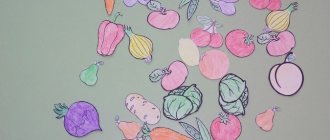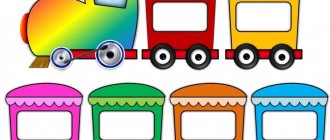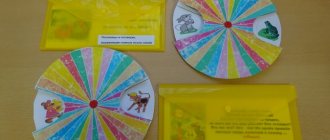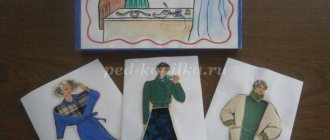Match items by color
The collective game “Select objects by color” helps to memorize the names of the main tones of the palette - brown, red, orange, yellow, green, blue, purple, gray, black, white (you can use all or several of the above).
The lesson develops:
- memory, thinking, attentiveness;
- speech skills;
- perseverance, diligence;
- the ability to visually perceive objects;
- motor skills of fingers;
- culture of collective behavior.
For the game, you need to prepare cardboard sheets painted in the selected colors, and cards depicting animals, plants, fruits, and things of appropriate shades.
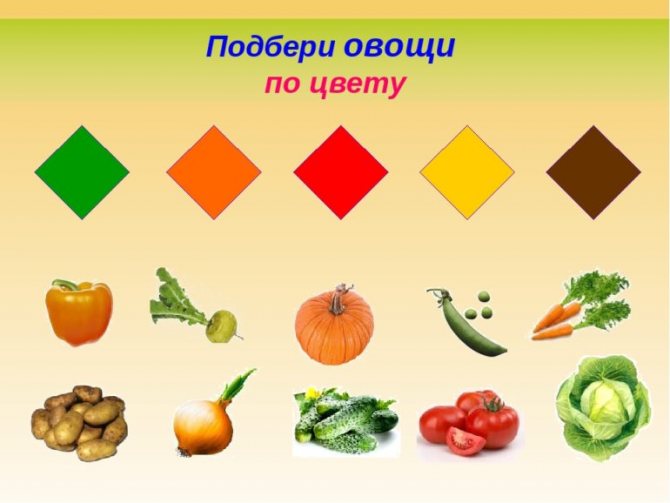
The teacher lays out cardboard on the table. Pupils take turns taking the illustration they like, saying what it depicts and what color the object is drawn. Place the card on the corresponding cardboard sheet.
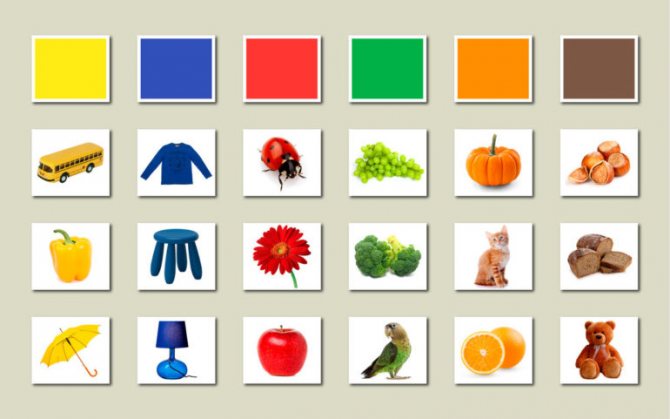
Children can be divided into groups according to the number of sheets of cardboard. Participants must take only those cards that match the color of the group.
Didactic games for children 5-7 years old on the topic “Color Science”
Didactic game
"An Artist Called Nature"
Age: middle, senior groups
Purpose of the game: continue to teach children to draw analogies between the seasons and the color scheme of paints. Determine the nature of the color “cold”, “warm” “Gentle” (pastel).
Progress of the game: the host offers the game participants cards depicting the seasons, as well as palettes with color spots characteristic of one of the seasons. The children's task is to match the seasons with the most suitable color spot. Determine colors and shades on the palette, their character (cold, warm, delicate).
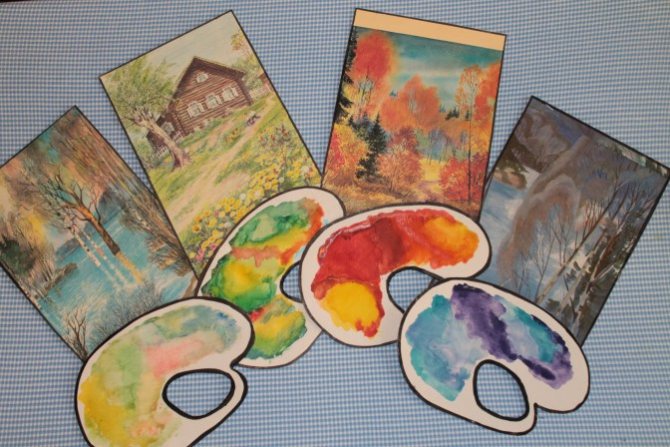
Didactic game
“Seasons and colors”[/u]
Age: senior, preparatory group.
Goal: to compare colors and shades with the characteristic color features of the season. To consolidate knowledge about the properties of color (character, saturation, brightness, composition).
Progress of the game: the game offers a landscape depicted by the artist in spring, summer, autumn and winter, with the characteristic colors of each season, as well as palettes and paint chips of different colors and shades. The task of the game participants is to select the color tips for each season, determine the saturation, character, shade, composition of each color (delicate - bright, cold - warm, basic - composite, shade of what color).
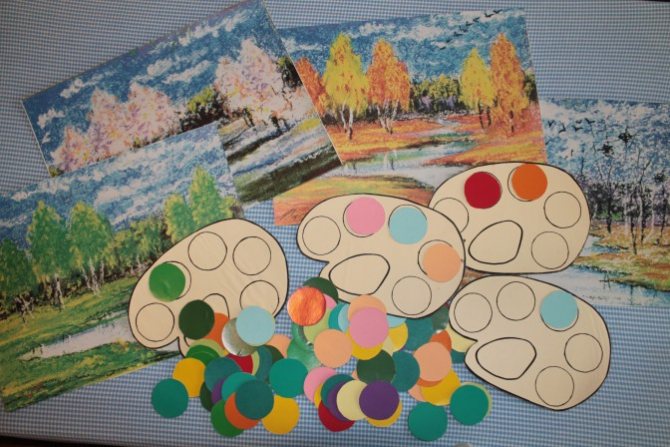
Didactic game
“Talking colors”[/u]
Age: senior, preparatory group.
Purpose of the game: to introduce children to the shade of color, to clarify the concepts of “color” and “shade”. Develop associative thinking, expand vocabulary.
Progress of the game: participants in the game are offered cards with images of objects, the name of which is associated with certain shades of colors (raspberry-raspberry; rose-pink, etc., as well as cards - shades. The task of the participants in the game is to correlate the cards-shades with their subject names Determine what color these “talking” shades belong to.
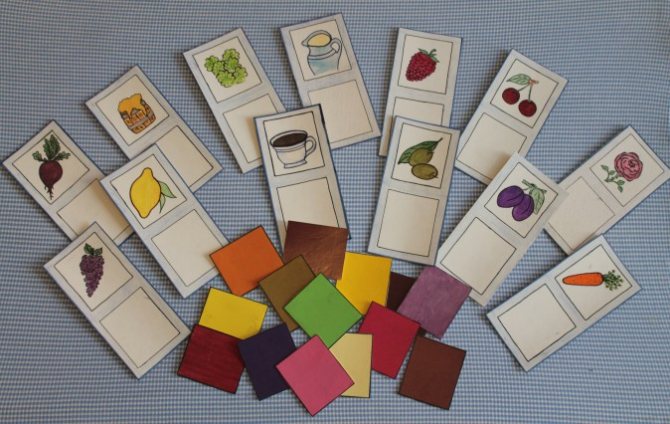
Didactic game
"The berries are ripe"
Age: junior, middle group
Purpose of the game: to consolidate the ability to create a gradation series of colors from light to dark, with and without a model.
Progress of the game: the game consists of a sample card, which depicts a row of berries, with a consistent increase in color shade. The task of the game participants is to be able to arrange cards with berries in a certain color order from lighter to darker according to the pattern, and then without it.
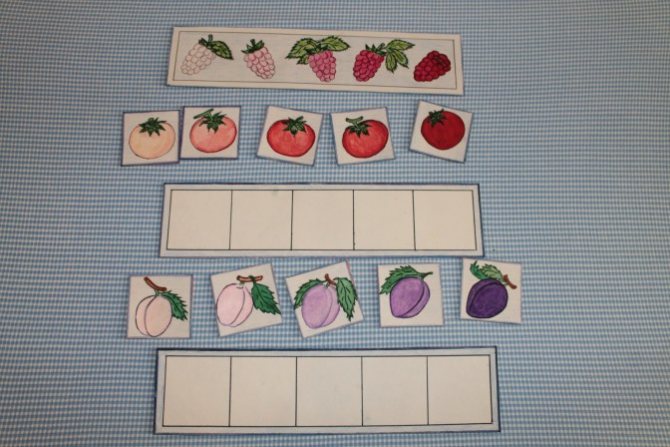
Didactic game
"Balloons"
Age: middle, senior groups
Purpose of the game: continue to get acquainted with the concept of “color spectrum”, compare it with a natural phenomenon (rainbow). Identify the colors included in the color spectrum and their sequence.
Progress of the game: the game consists of a didactic field, which depicts the silhouettes of seven balloons, as well as individual multi-colored balloon cards. Several game options are offered:
Option 1. The task of the game participants is to arrange seven colored ball cards in the correct spectral sequence, using a popular speech phrase-hint (Every Hunter Wants to Know Where the Pheasant Sits, in which the sequence of words and the first letters correspond to the color of the rainbow.
Option 2. In addition to the seven ball cards, the game participants are offered additional colors and shades. The children's task is to choose those ball cards that are part of the rainbow and arrange them in the correct sequence.
Option 3. The presenter places the balls in a spectral sequence, breaking the sequence of two or more colors. The children's task is to detect the mistake and correct it.
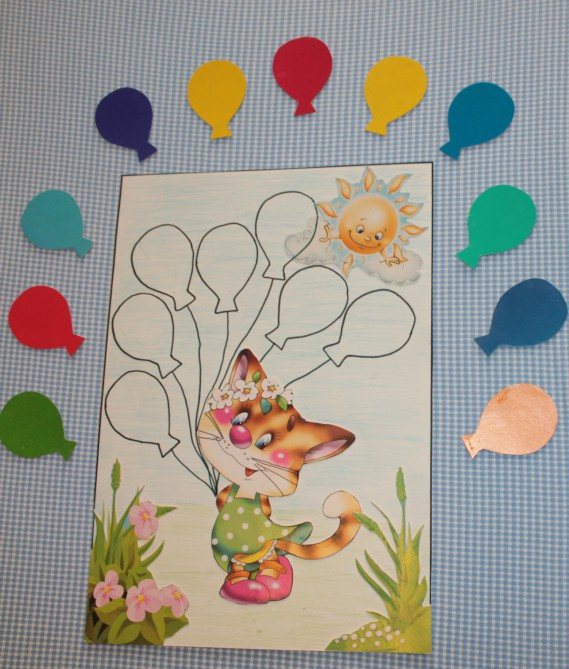
Didactic game
"Colors and Magic"
Age: senior, preparatory group
Purpose of the game: to introduce children to the concept of “color tone”, to give ideas about obtaining rich and light tones, and how to obtain them. Create a gradation series (from light to dark and vice versa).
Progress of the game: the game consists of a set of shades of three colors - silhouettes (blue, yellow, red, as well as cards depicting colored and white drops. The children’s task is to arrange the shades of colors in an increasing sequence from light to saturated color and vice versa, during the game they find out What is a “shade of color”, how is it obtained.
Didactic game
"Color Transformation"
Age: middle, senior groups.
Purpose of the game: to consolidate children’s skills in obtaining new colors in paints. Identify primary and secondary colors.
Progress of the game: children are offered silhouettes of paints with primary (red, yellow, blue) and composite (orange, green, purple, blue) colors. There are several options for the game.
Option 1. The presenter adds two paints of primary colors and invites the participants in the game to determine the composite color that will be obtained.
Option 2. The presenter chooses one of the composite colors of paint and asks the participants in the game to find those paints (primary colors, when mixed, the color he has chosen is obtained.
Option 3. The participants of the game independently determine which primary colors of paints need to be added to obtain composite colors.
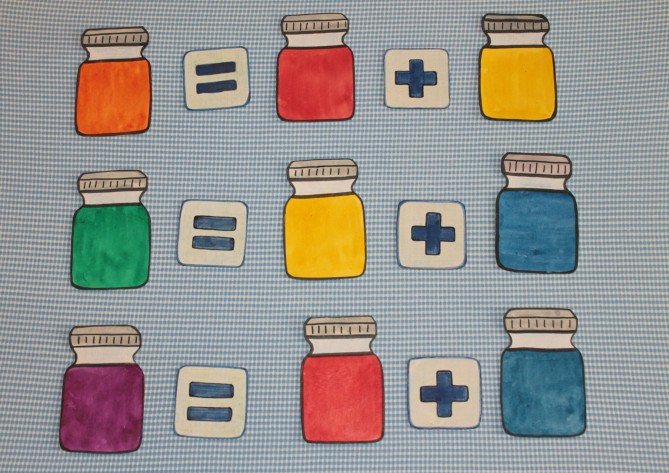
Place flowers in a vase
This version of the “Match by Color” game reinforces the idea of three basic tones - blue, red, yellow.
Lesson objectives:
- formation of cognitive and analytical abilities;
- improving finger motor skills;
- fostering perseverance, diligence, and the ability to work productively in a team;
- development of speech, expansion of vocabulary by including words related to the tones of the palette;
- improving the ability to visually perceive objects.
For the didactic game, you need to cut out three vases and many flowers of three corresponding colors from cardboard. The teacher places vases on the table and puts the flowers into piles according to color. Gives the children the task of choosing the correct group of flowers for each vase.
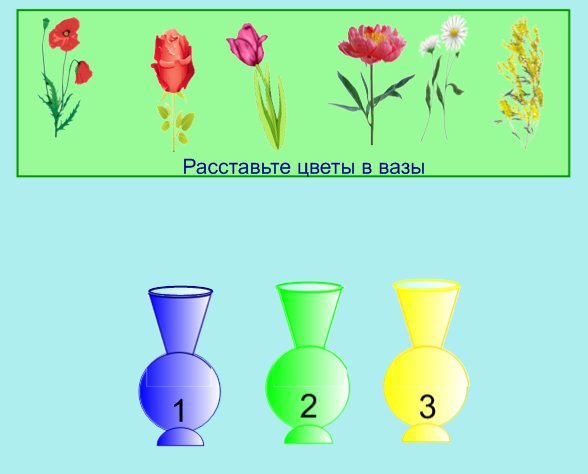
You can complicate the task to develop logic and attentiveness, mix the flowers in one pile. Pupils must correctly distribute the flowers among the vases.
Didactic board game for sensory development “Match by color”
Tarasova Lyubov Valerievna
teacher of MADOU "CRR-Kindergarten No. 13 "Solnechny" (compensatory) Solikamsk
Nomination: Creation of software and methodological support for the educational process
Title of the competition work: Summary of the didactic board and printed game on sensory development “Match by color” for children 2-3 years old with developmental disabilities
Author: Tarasova Lyubov Valerievna
Didactic printed board game on sensory development
Name: Lotto game “Match by color”
Children's age: 2-3 years
Purpose of the game: enriching children's sensory experience with didactic material on sensory development. Formation of the ability to distinguish and name primary colors (red, blue, yellow, green)
Tarasova Lyubov Valerievna, teacher of the early age group, MADOU "CRR - Kindergarten No. 13 "Solnechny"
Solikamsk
Game – lotto “Match by color”
1-4 CHILDREN PLAYING
Tasks:
—didactic:
exercise the ability to correlate various homogeneous objects according to one of the sensory attributes: color;
— developing
: develop the ability to distinguish primary colors (red, blue, yellow, green);
—educational:
support the expression of interest in play interaction.
Game task:
Let's help Masha and Misha choose pictures that are similar in color.
Game rules:
—organizational:
the game is played in a group room, the number of players is from 1 to 4 children, the game is led by a teacher;
—disciplinary:
the adult shows a card with an image of an object of a certain color, the child must visually see who this card belongs to (control - matching the color of the main card and small cards);
—gaming:
Whoever is the most attentive, collects all the cards first, whoever helps Masha and Mish, wins.
Contents (plot) of the game:
-Guys, Masha and the Bear came to visit you, please tell me what cartoon did you see them in?! (Children's answers). That's right, Masha and the Bear. They didn’t come to you empty-handed, they brought with them a game called “Match by Color,” but they guys mixed up all the cards and ask you to help them find their houses for all the cards. The cards depict different objects and are of different colors. Let's see what colors their houses are painted in (Children's answers: red, blue, yellow, green). Right. Now choose one card for yourself. I will show you a card on which an object is drawn, who knows, he can say what color it is, and we are looking for a house of the same color for it. Whoever is the most attentive, whoever collects all the cards first and helps Masha and Misha, wins. Let's get started (there is a game going on where the teacher shows a picture with an image of an object of a certain color, the children, who know, name the object depicted on the card and the color of this object and look for a house of the same color for it, correlating the image and color).
Well done guys, you completed the task and helped Masha and Misha.
Multi-colored balls
The didactic game “Match balls by color” reinforces ideas about the basic tones of the palette and develops the ability to correlate objects by shade. The exercise promotes speech development and attentiveness.
To play, you need a picture depicting a boy or girl with multi-colored ropes in his hand. You need to cut out balloons of the appropriate colors from cardboard.
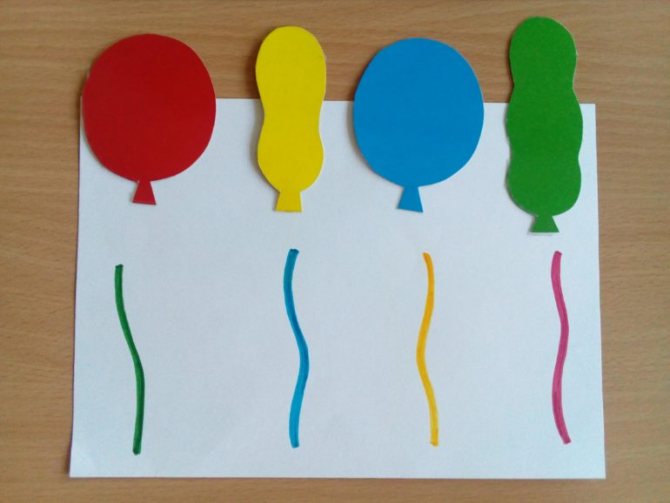
The teacher, pointing to the picture, explains that the balloons came off and flew away. The task of preschoolers is to find the balloons that have flown away and correctly attach them to the ropes.
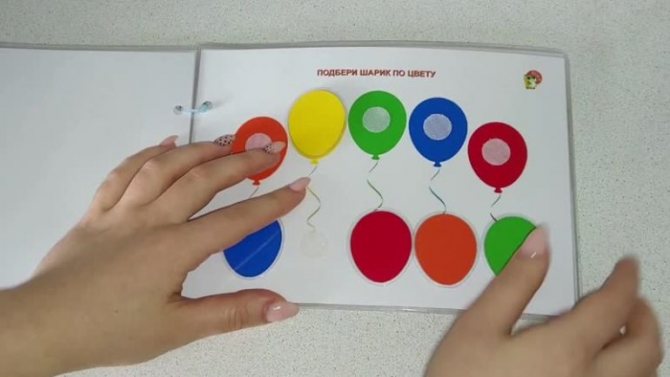
Caterpillar
The didactic game reinforces the idea of the main colors - red, yellow, green, blue.
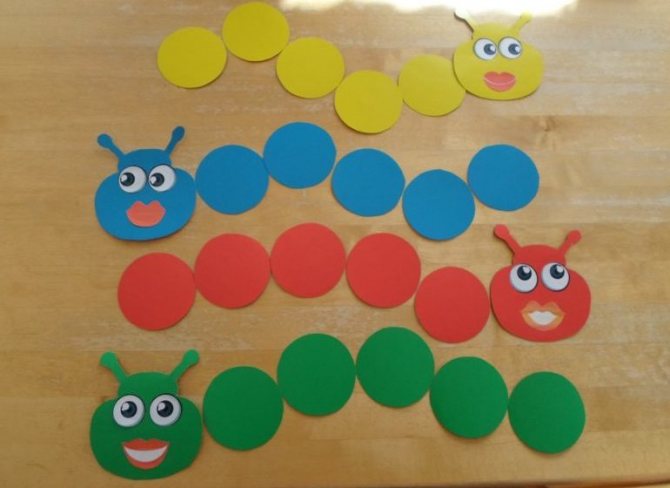
The lesson promotes:
- the desire for knowledge;
- development of speech skills;
- formation of analytical ability and logic;
- development of attentiveness, perseverance, independence;
- gaining the ability to work with templates.
The activity requires four illustrations of caterpillars as empty circles with painted heads, as well as four colored circles of the appropriate diameter.
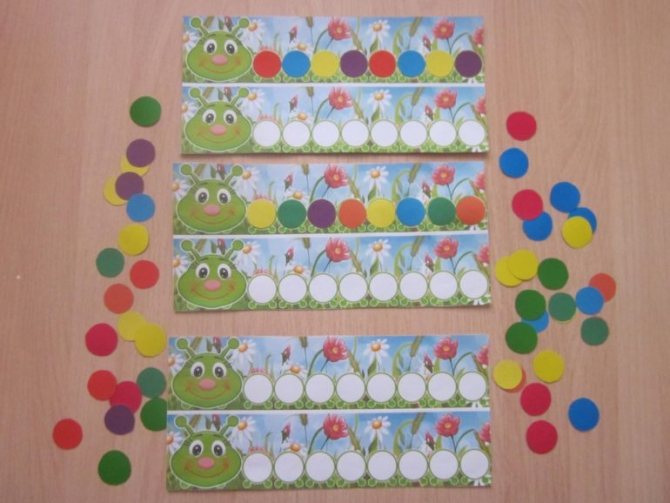
Children must make caterpillars from circles, guided by the color of their heads.
For older children, you can complicate the task: cut out circles of light-dark or warm-cold tones, ask them to arrange the caterpillars from beginning to end.


